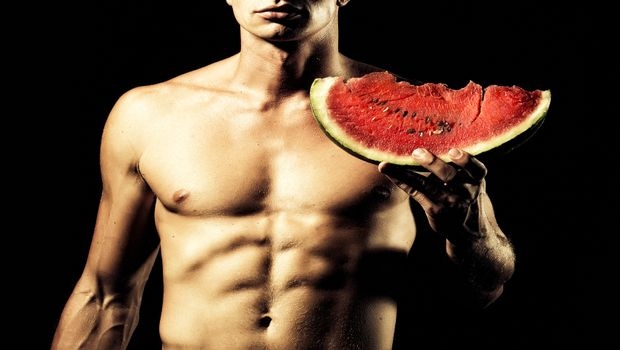Given the broad range of ingredients marketed for increased energy, it is crucial to slice through the hype and marketing by focusing instead on research.

In the context of sports nutrition the definition of “energy" can be provided with precision as it is linked to muscular, athletic and/or competitive sport performance but not, for example, to cognitive performance or alertness “energy" alone. Surveying the landscape of energy bioactives yields a large and broad territory. Thus, this small review of key research on energy bioactives will focus on acute, single-dose ingestion before exercise, defined by a select few modes of presumed action.
Citrulline: Solo or Malate Mated
L-citrulline, like creatine, is a non-protein amino acid yet with discovery origins in a vegan food source: watermelon. Much of the focus on L-citrulline has been on its presumed action of increasing muscle blood flow due to its possibly superior systemic delivery of arginine (a nitric oxide precursor), compared to arginine itself.5 L-citrulline also may influence the production of ATP from carbohydrate metabolism during intense exercise. Two studies have shown L-citrulline to confer no performance benefit—one of these two showed decreased performance treadmill running time to exhaustion (3 g, three hours before the run, or 9 g over 24 hours before the run).6 The other study had university athletes take watermelon juice (with an approximately 6-g payload of L-citrulline), 6 g of L-citrulline mixed into a drink with approximately 53 g of sucrose, or a sucrose placebo, one or two hours before bench pressing and treadmill running to exhaustion;7 blood flow also was unchanged by either L-citrulline source.
On the other hand, acute dosing with citrulline malate (8 g; one hour pre-workout) has been shown to improve leg-centric and pectoral/chest-centric resistance training performance among resistance trained males.8,9 Collectively, these studies reinforce the malate form of citrulline and intensively question any sports nutrition “energy" merit of L-citrulline alone.
For more information on energy bioactives applied to sports nutrition, read the full article, “Sports Nutrition: Energy Bioactives," in INSIDER’s free Sports Nutrition Energy Digital Issue.
Anthony L. Almada, MSc, FISSN, has collaborated on more than 50 university-based human studies assessing sports nutrition products. He was the co-founder of EAS (which introduced creatine to North America in 1993) and is the CEO of Vitargo Global Sciences Inc.
References
1. Harris RC et al. “Elevation of creatine in resting and exercised muscle of normal subjects by creatine supplementation." Clin Sci 1992;83:367-74.
2. Earnest CP et al. “Ingestion of creatine monohydrate immediately prior to exercise does not increase performance in creatine loaded individuals." Sports Med Train Rehab 2000;9(4):263-75.
3. Antonio J and Ciccone V. “The effects of pre versus post workout supplementation of creatine monohydrate on body composition and strength." J Int Soc Sports Nutr 2013;10:36.
4. Candow DG et al. “Strategic creatine supplementation and resistance training in healthy older adults." Appl Physiol Nutr Metab. 2015;40:689-94.
5. Schwedhelm E, et al. “Pharmacokinetic and pharmacodynamic properties of oral L-citrulline and L-arginine: impact on nitric oxide metabolism." Br J Clin Pharmacol 2007;65:51-9.
6. Hickner R et al. “L-citrulline reduces time to exhaustion and insulin response to a graded exercise test." Med Sci Sports Exerc. 2006 Apr;38(4):660-6.
7. Cutrufello PT et al. “The effect of l-citrulline and watermelon juice supplementation on anaerobic and aerobic exercise performance." J Sports Sci 2015;33:1459-66.
8. Wax B, at al. Effects of supplemental citrulline malate ingestion during repeated bouts of lower-body exercise in advanced weight lifters. J Strength Cond Res 2015;29:786-92.
9. Perez-Guisado J, Jakeman PM. Citrulline malate enhances athletic anaerobic performance and relieves muscle soreness. J Strength Cond Res 2010;24:1215-22.
10. Beyond the obvious: Future innovations in sports nutrition. Almada AL. Nutritional Supplements in Sports and Exercise. Second edition. Greenwood M, et al., Eds. Springer International, New York, 2015.
11. Griffiths RR, et al. Low-dose caffeine discrimination in humans. J Pharmacol Exp Ther 1990;252:970–8.
12. Childs E, de Wit H. Subjective, behavioral, and physiological effects of acute caffeine in light, nondependent caffeine users. Psychopharmacology 2006;185:514–13. The effects of supplementation with p-synephrine alone and in combination with caffeine on resistance exercise performance. J Int Soc Sports Nutr 201512:35.14.
14. Rainnie AS, et al. The efficacy of ingesting low-dose capsaicinoids for ergogenic benefit. Appl Physiol Nutr Metab 2015;40:S53-4.
About the Author(s)
You May Also Like




.png?width=800&auto=webp&quality=80&disable=upscale)